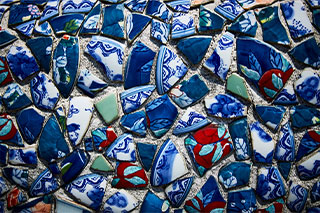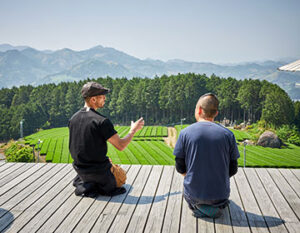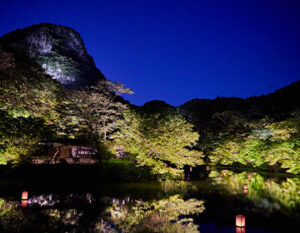One of the Largest Arita Pottery Fairs in Japan
Saga is famous for its ceramics. Arita-yaki, Imari-yaki, Nabeshima-yaki, Karatsu-yaki, Hasami-yaki, and other nationally known production areas are scattered throughout the prefecture. It is said that the production of ceramics in this region flourished because many Korean potters were brought here by Toyotomi Hideyoshi during his invasion of Korea. Many people gather from all over the country for pottery fairs, and the Arita Pottery Fair, said to be one of the largest in Japan, attracts a whopping one million visitors. The sight of so many people, including couples, families, children, and the elderly, happily shopping for pottery is a reminder of the richness of the culture of the land of Saga.

Okochiyama, known as the “home of hidden kilns
Okochiyama is known as the “home of hidden kilns” in Saga Prefecture. To get to this place, which is now maintained as the Nabeshima Clan Kiln Park and crowded with tourists, you must pass through a winding mountain road. Surrounded by mountains on all sides and with a river running through it, the hillside is rich in nature and was the site of domain kilns that produced “Iro-Nabeshima,” “Nabeshima Sometsuke,” and “Nabeshima Celadon” under the strict control of the Nabeshima domain from the 17th to 19th centuries. A large vase adorns the parapet of the bridge at the entrance, and the area around the bridge is decorated with a mosaic of Nabeshima ware. The town’s guide map, which includes a barrier that protected the secret methods of pottery production, the ruins of a climbing kiln, and other historical assets, is also made of pottery. Along the winding slope, brick chimneys and kilns stand side by side, and many pottery stores are located around them.
Arita-yaki, Imari-yaki, and Nabeshima-yaki pottery line Mt.
To the untrained eye, it is difficult to distinguish between Arita-yaki,Imari-yaki, and Nabeshima-yaki, but the works on display exude an unmistakable sense of luxury. It is said that Nabeshima-yaki is characterized by the lack of tea ceremony utensils, the fact that plates were mainly fired, and the underlying patterns painted on the bluish surface of the clay.
Okochiyama, a “hidden kiln village” where visitors can experience pottery in a relaxed atmosphere
Although there are many stores where visitors can try their hand at pottery spinning and painting, it is only the “village of hidden kilns” that attracts visitors to this area. The area is not as crowded as a pottery market, so visitors can experience the charm of pottery in a relaxed atmosphere. Mount Okawachi, with its mountains, rivers, and seasonal flowers. The rich nature of Saga must have given imagination to artisans in ancient times. It is worth a visit for those who want to experience the atmosphere of a kiln that is different from famous production centers.







